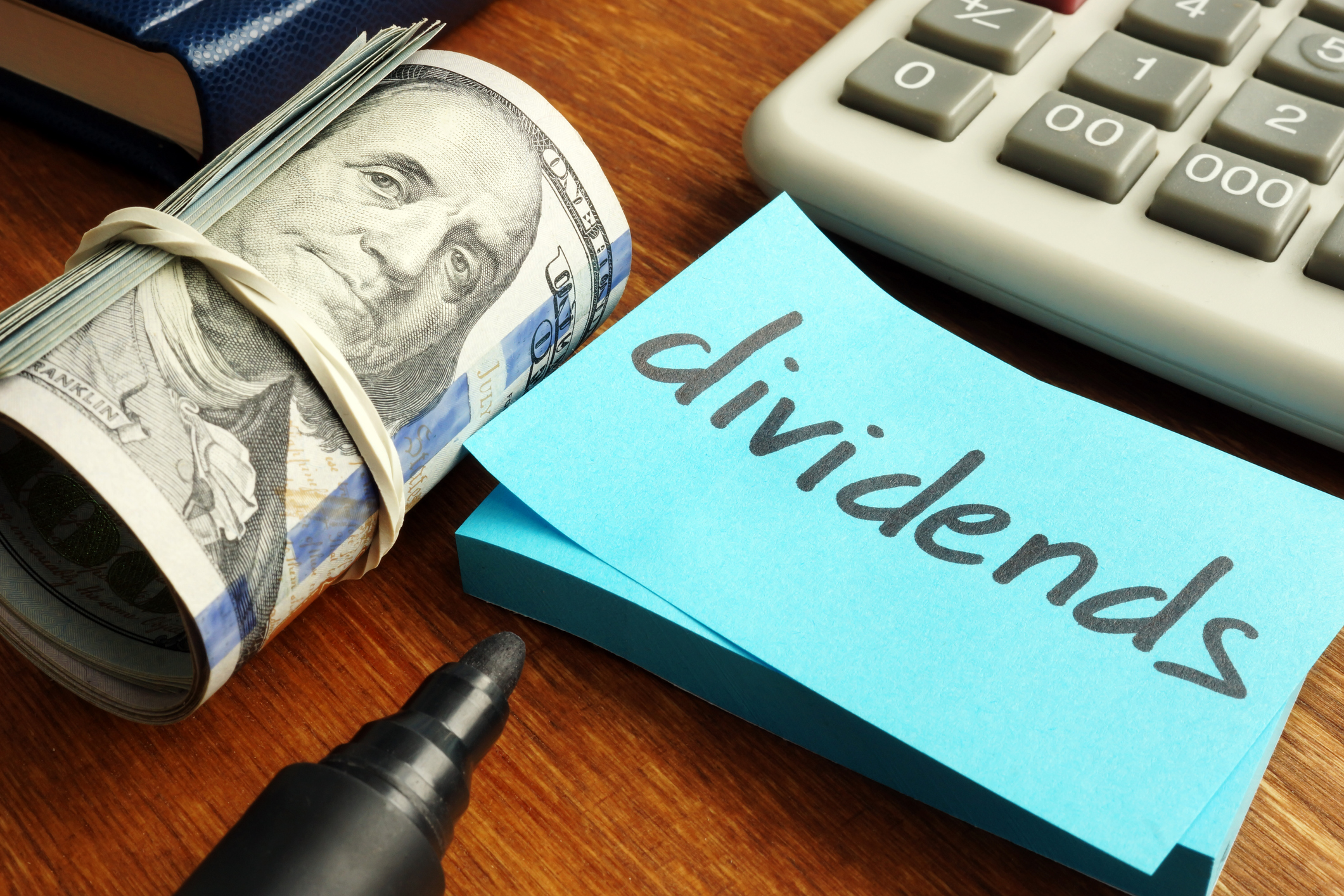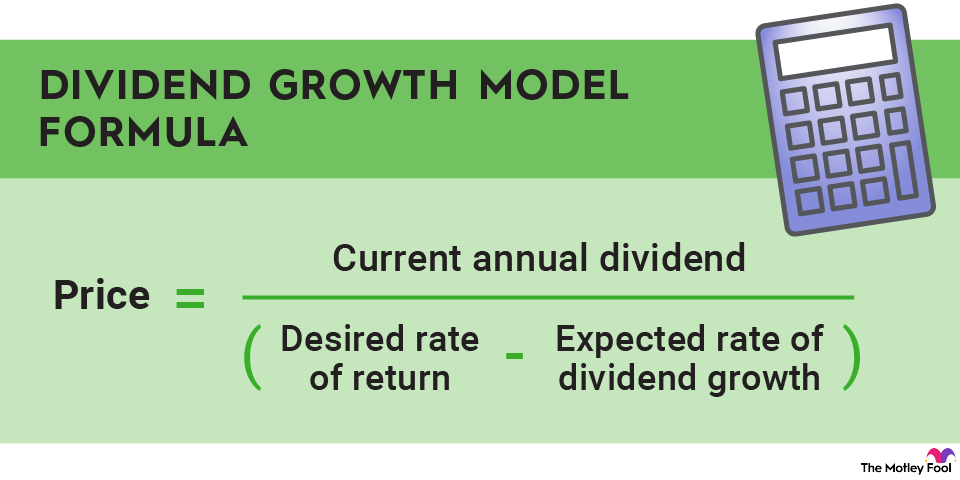While that may have looked attractive given that the stock price was around $53, the margin of safety was just under 16%. That's not quite high enough for a bank that had recently experienced issues and had been fined by the government over a scandal involving fake accounts. If the bank stock had been priced lower to begin with, it likely wouldn't have fallen after its dividend cut in 2020.
Dividend models
While using the dividend growth model can be a handy way to work through various scenarios to determine if a stock's current price represents a fair value, there are other formulas you can use to model the value of a company's future cash flows. These are often used with a cost-of-capital adjustment to discount the value of those future cash flows.
The Gordon Growth Model
The Gordon Growth Model is a means of valuing a stock entirely based on a company's future dividend payments. This model makes some assumptions, including a company's rate of future dividend growth and your cost of capital, to arrive at a stock price.
The Gordon Growth Model is a variation of the discounted cash flow model, which is widely used by investment analysts. The model forecasts future dividends based on the current amount and a growth rate, then discounts each dividend back to the present day. The sum total is an estimate of the stock's value.
The future dividends are discounted back to the present to determine their present value. Because money is worth more to you now (not only do you have it now, but you could invest it), potential future money needs to be discounted for conservative analysis.
Where discounted cash flow models typically forecast cash flows out to a certain date and assume the company will cease to exist at that point or be acquired, the Gordon Growth Model's assumptions imply that the company will exist indefinitely. This may sound aggressive, but, in reality, the model discounts the values of dividends.
We can use the Wells Fargo valuation above as an example. The calculation was ($2.04 / (11%-7.8%)). So, $2.04 is the annual dividend, 11% is the discount rate or required rate of return, and 7.8% is Wells Fargo's dividend growth rate. The Gordon Growth Model calculates an intrinsic value of $63.75 per share.
Variations on the Gordon Growth Model
Two common variants that do the same thing -- value a stock entirely according to future dividends -- are the one-period dividend discount model and the multiperiod dividend discount model. While the Gordon Growth Model is a simple formula for valuing a stock based on future dividends after adjusting for the cost of capital, these two variants apply a more complex formula to value dividends over a specific period.
Be conservative on dividend growth
Dividend modeling can be helpful for valuing a stock, but it's heavily influenced by assumptions. There are the calculations and there's what happens in the real world. In other words, don't get too caught up in trying to be precise with your modeling; the extra time you invest in trying to get perfect calculations won't improve the end result in the real world.
A famous saying in finance is that financial models are like the Hubble Space Telescope. Move it a fraction, and you're in a totally different galaxy.
A better approach is to hedge toward being conservative with your projections. The more optimistic your expected rates of dividend growth, the higher the intrinsic value you will arrive at. If a company fails to deliver on your expected future dividend growth, your future returns could be affected.
The biggest lesson? Be conservative in your expectations. Accept the fact that your modeling is only a helpful part of the broader framework that makes up your investing strategy, and always insist on a margin of safety.
Related dividend stocks topics






















